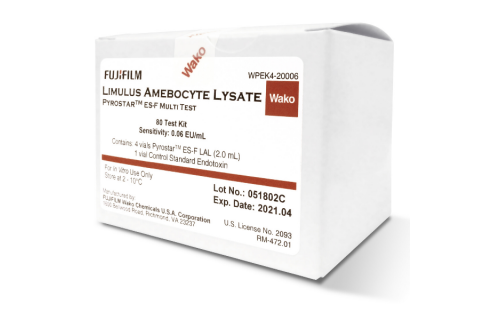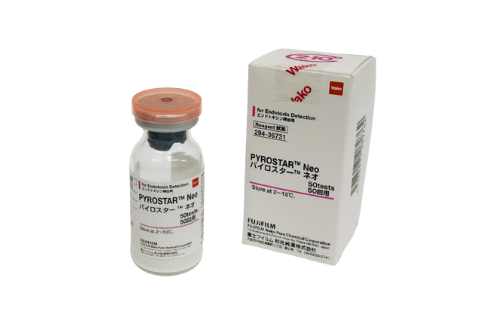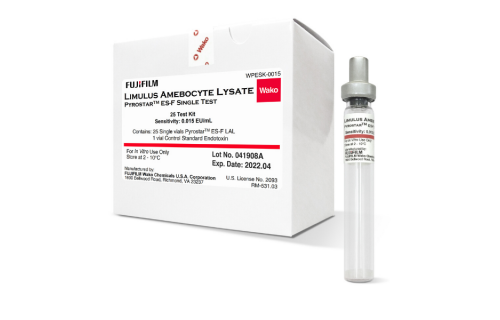Using LAL to fulfil ANSI/AAMI ST108:2023 New Requirements
To ensure proper disinfection of medical instruments, a typical sterile processing department requires a constant flow of water, going through thousands of gallons every day. The AAMI TIR34 guideline, known as "Water for reprocessing of medical devices," has been the go-to reference for numerous healthcare facilities for years, serving as the key document to set up and regulate water quality within their departments.
A significant change occurred in 2023 when AAMI released ANSI/AAMI ST108:2023, a revised standard intended to replace TIR34, titled "Water for the processing of medical devices."
The ANSI/AAMI ST108:2023 Standard
The new standard ANSI/AAMI ST108:2023 aims to guide users in qualifying and maintaining the water system, ensuring that the quality of water remains under control. ANSI/AAMI ST108:2023 also requires testing of the three categories of water quality: utility water used for washing devices, steam condensate used for sterilization, and critical water used for reprocessing, sterilizing, and rinsing. The water quality must be tested for multiple parameters including Microbial parameters. (e.g., heterotrophic bacteria; endotoxins).
With the implementation of the new standard, the risks associated with using low-quality water for cleaning and sterilization of medical devices can be avoided. These risks include the potential for infection, toxicity, pyrogenicity, an increased microbial load or endotoxin content, and the development of biofilm.
Risks Associated with Pyrogenicity in Low Quality Water
Endotoxin exposure can result in a range of symptoms, including fever, diarrhoea, vomiting, and acute respiratory illnesses.
Furthermore, hospitals that fail water quality tests may face various issues, including the possibility of not being able to perform surgeries for the day, the risk of losing their Joint Commission accreditation, and potential legal action, among other consequences.
Limulus Amoebocyte Lysate (LAL) Assay
The FDA approved, LAL assay test, is widely used to detect pyrogens and endotoxins in the pharmaceutical industry. Researchers have suggested that the LAL assay is a useful technique to determine the endotoxins and bacterial load for water quality. The LAL assay is used to carefully monitor the presence of endotoxin in the water used to sterilize the reuseable medical devices for surgical procedures, capable of detecting even picogram amounts of the molecule.
Among LAL methods, the gel clot method is the most commonly used. The test relies on the blood clot reaction between the endotoxin and the lysate to determine its presence or absence. The LAL turbidimetric or chromogenic test can be used to quantify the presence of endotoxin, as indicated by clotting. The LAL assay, known for its wide acceptance, is also commonly employed to detect endotoxins in water used for haemodialysis.
Complying with the ANSI/AAMI ST108:2023 Endotoxin Specification
According to the ANSI/AAMI ST108:2023 standard, the endotoxin level in Critical Water, which is used for reprocessing, sterilizing, and rinsing, must be below 10 EU/ml. Monthly testing is necessary for compliance with this standard.
LAL gel-clot method based PYROSTAR™ ES-F single-test and multi-test kits are the simplest of LAL methods with sensitivities of around 0.015 to 0.25 EU/mL. It is used by Healthcare facilities, pharmaceutical companies, and other industries to ensure the absence of endotoxins in their products and environments.
Literature sources
- Vockley, M., AAMI Publishes First National Standard on Water Quality for Medical Device Processing. Journal of Clinical Engineering, 2024. 49(1).
- El-Radhi, A.S., Pathogenesis of Fever. Clinical Manual of Fever in Children. 2019 Jan 2:53-68. doi: 10.1007/978-3-319-92336-9_3.
- Daneshian, M., et al., High sensitivity pyrogen testing in water and dialysis solutions. J Immunol Methods, 2008. 336(1): p. 64-70.
- ANSI/AAMI ST108:2023; Water for the processing of medical devices.






